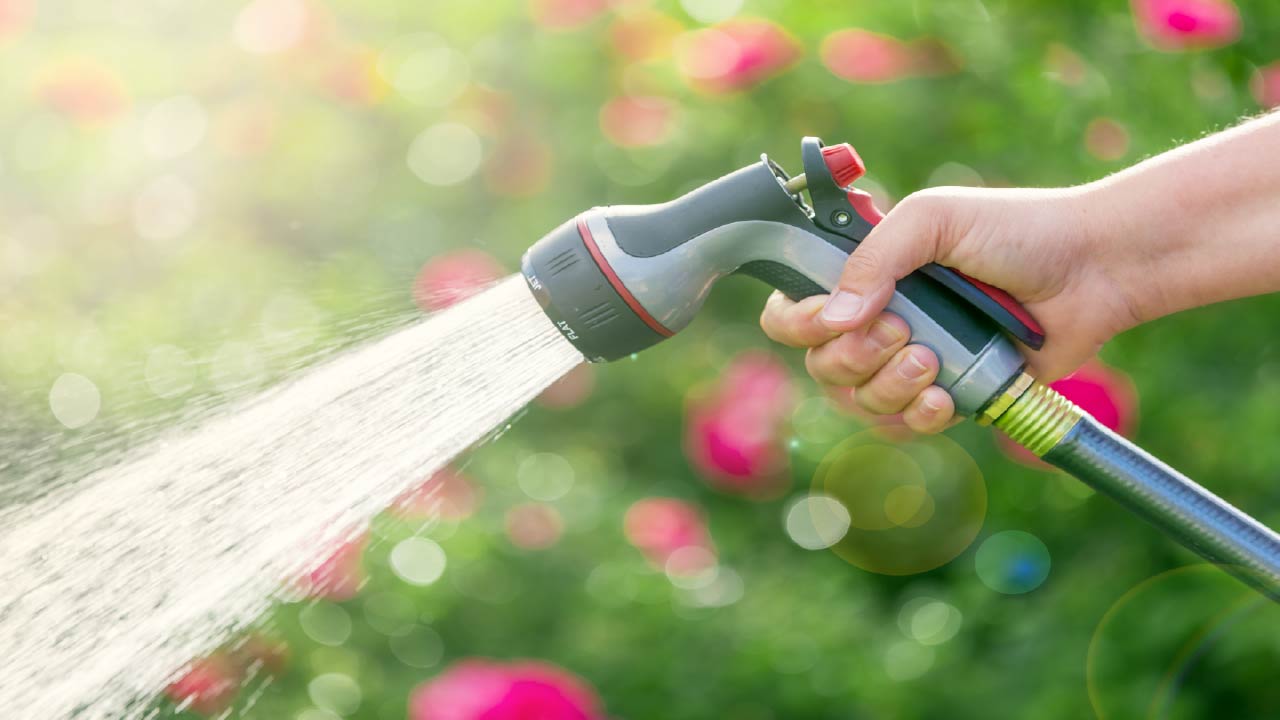How to Choose the right Garden Hose
Oct 5th 2023
One of the most important tools of your garden can often be overlooked. The humble garden hose is essential to many garden tasks like watering, cleaning, and keeping cool in the heat of summer. A cheap hose or one that isn't made very well can cause lots of problems down the line, including the hose getting kinked or leaking all over the place, leading to tremendous frustration. Thankfully, we have a lot of great advice on how to choose the right garden hose for your landscape.
What to Look for When Selecting a Garden Hose
When choosing a garden hose, there are a few things you'll need to be on the lookout for. First, check the material the garden hose is made out of. Most hoses are made from rubber, vinyl, or polyurethane. Vinyl hoses are typically the cheapest available, but they also tend to have the shortest lifespan. Rubber hoses may be a bit more expensive, but they are also the most resistant to breakage and tend to last for a long time in the garden. Hoses also come in a variety of thicknesses, with 2-ply hoses as the least strong and 6-ply as the strongest. Thicker hoses kink less easily as well, making them very useful in the garden.
Be sure to also take your size preferences into account when deciding on your garden hose. Is your landscape or garden fairly large? If so, you'll likely want to invest in a garden hose that can reach your farthest corners. However, smaller spaces will be perfectly well served by shorter hoses. Most hoses are between 50-100 feet long, but longer and shorter ones are available. Keep in mind that longer hoses can be a bit difficult to manage. Our top option is the Gilmour Flexogen Hose, which is made in the USA and has maximum kink resistance. It's extremely light, durable and leak proof, leading to a frustration-free gardening experience.
How to Care for Your Garden Hose
Once you have invested in a high-quality garden hose, it only makes sense that you'd want to take care of it. One of the best things you can do for the longevity of your garden hose is to store it out of direct sunlight. The sun's UV rays can damage the exterior of the hose, causing it to break down faster than it needs to. To prevent build-up, mold, or bacteria, be sure to drain your garden hose after each use. If any leaks appear, be sure to patch them promptly to ensure they don't get bigger. If needed cut a piece of the garden hose and use a barbed coupler and hose clamps to rejoin the hose. If you live in a cold region, completely drain your hose at the end of the growing season and store it in a garage or basement to prevent freezing.
Common Fittings Needed to Connect Your Garden Hose
Connecting your garden hose properly is an important step in promoting the efficiency of your garden. If your outdoor spigot and garden hose head are different sizes, then you may need to get an adapter. Fortunately, most hoses in the United States come in the standard garden hose thread of ¾ inch. If you are looking to connect your garden hose to a drip irrigation system valve, then you may need a hose-to-pipe adapter. These allow you to connect two incompatible threads together. To stop garden hose connections from leaking, be sure that any rubber gaskets are firmly in place. You may also want to use some thread-sealant tape.
How to Repair if Damaged
If your hose gets damaged, you may still be able to repair it. Small leaks are likely to be able to get fixed while large rips may require an entirely new hose. To fix a leak, first identify the location it's coming from. If the leak is located where the hose attaches to the faucet, you can replace the rubber gasket. Small holes can easily be sealed with electrical tape. A hose mender may be a wise investment if your hose gets a rip. It's a short plastic or metal tube that replaces the damaged section of hose.
DIY Reels for Garden Hoses
The best way to store your garden hose is on a hose reel. Unfortunately, many of the store-bought reels are just bulky pieces of plastic that don't work particularly well. It is simple and easy to make your own DIY version of the hose reel right at home. The easiest option requires only a metal bucket, a drill and four screws. Just be sure that the bucket isn't too flimsy. After you've gathered your materials, all you need to do is find a spot in your house, a fence or a nearby tree that isn't in the way. Screw it on and you're good to go. Larger hoses will require increased height of the bucket.
To find more DIY ideas and garden blogs visit us at dripworks.com. Gardening can be enjoyable and rewarding, adding the right tools like a garden hose will make the watering and cleaning of your garden easy. Remember when selecting the right hose always look for material, thickness, and length.

